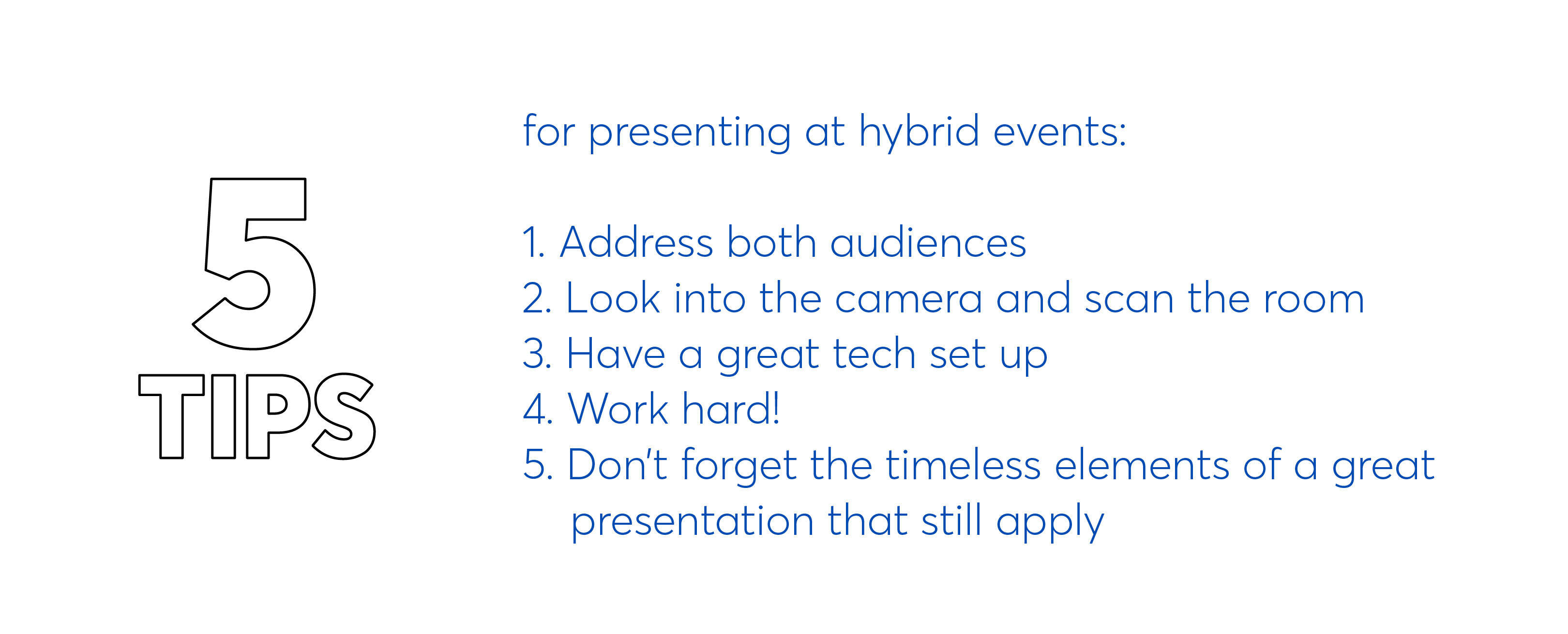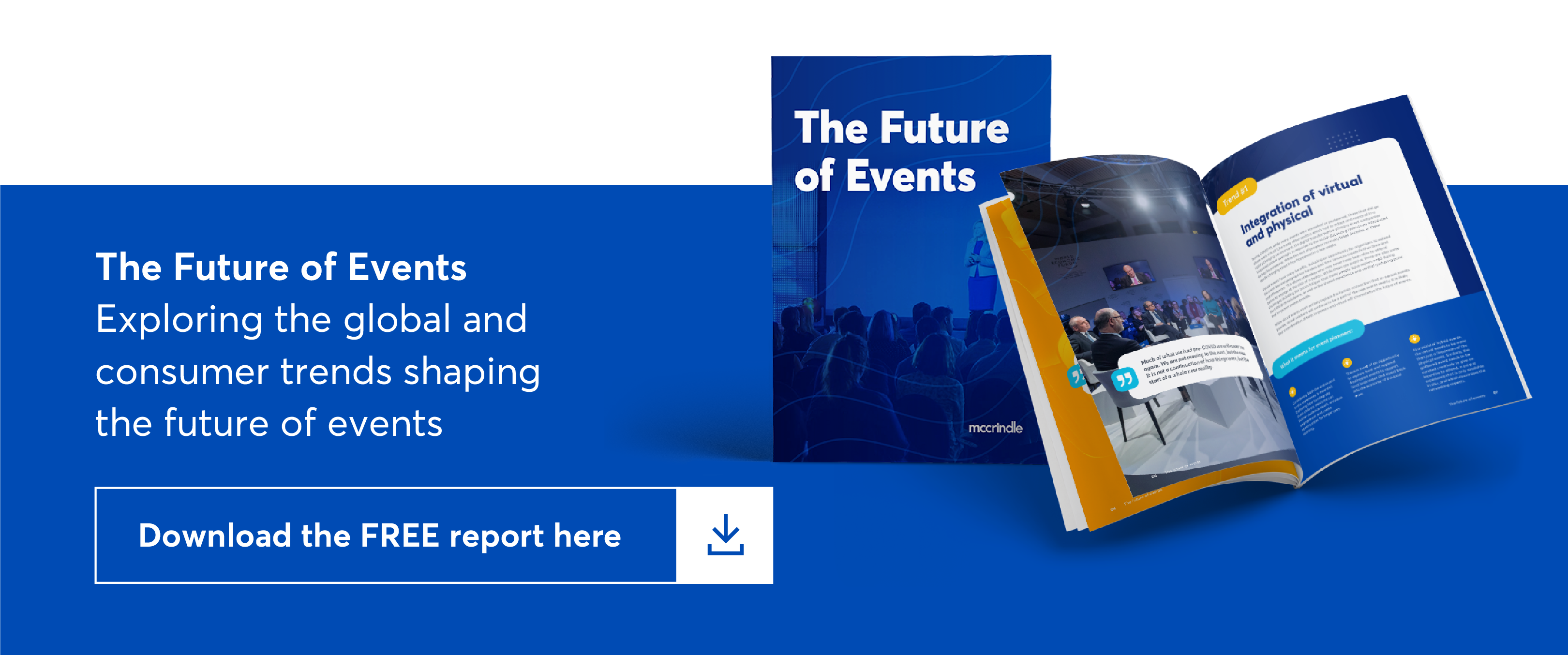Five tips for presenting at hybrid events

People love to attend all sorts of events to engage in a shared experience, learn something new or be inspired. Prior to COVID-19, the demand for live experiences was growing across all age groups, but particularly among the future generations of event attendees. Although COVID-19 provided a devastating blow to a much-loved sector, the events industry has responded to a changing market with innovation and digital transformation, which is set to shape the future of the industry in a post-COVID era.

Virtual events have many benefits – like the ability to extend the event beyond geographical borders, allowing attendees who might not have been able to attend before to engage at the click of a button. There are also some challenges, including the ‘zoom fatigue’ that many experienced during the COVID-19 lockdowns, as well as the lack of a shared experience and central gathering point that live events provide.
While virtual events won’t entirely replace the human connection created at in-person events, virtual solutions will continue to be a part of the new events reality. It is likely that a combination of both in-person and virtual will characterise the future of events.
So, what is important for a speaker to keep in mind when presenting at hybrid events?

1. Address both audiences
In your introduction, it is worth letting the audience/s know that there are people participating both online, and in the room (so then they know why you might be varying your delivery or where you look).
2. Look into the camera and scan the room
In the first two minutes of your presentation, make a point of addressing the camera directly, then move to a mix of looking into the camera and scanning the room. Also, don’t forget about those tuning in virtually! It can be easy to just focus on the people in the room because they are there with you, giving you real time feedback. But, if an event is hybrid, then remember to address the online audience as well.
3. Have a great tech set-up
A great tech set up enables you to deliver a great presentation. Good lighting, good sound and having a camera at eye level all make a big difference for those tuning in at home – and the more subtle the set up is, then the better it is for those in the room.
4. Work hard!
Delivering a great presentation is hard work, because really, it is a performance. When people are viewing virtually, they have endless distractions at their fingertips – from checking emails to making lunch while you are presenting – not something people in the room can get away with as easily! Therefore, work hard to make your presentation engaging. Use visuals, stories, humour, and other creative ways of engaging and maintaining their interest and attention. Also, when delivering content virtually, add an extra 10%, because the camera takes it off.
5. Don’t forget the timeless elements of a great presentation still apply
Finally, don’t forget about the timeless elements of a great presentation; a strong introduction, good pace, use of pauses and gestures, the ability to be concise, use of visuals instead of words, and the importance of rehearsing!




